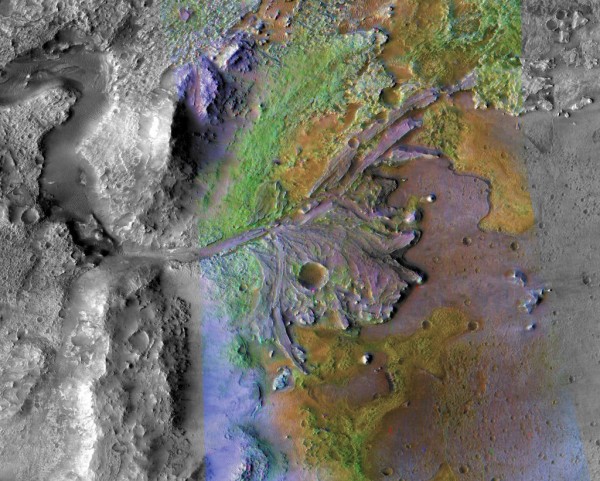By Ana Verayo, | February 18, 2017

Here is the Jezero Crater delta, where sediments contain clays and carbonates. (NASA/JPL-CALTECH/MSSS/JHU-APL)
NASA has revealed three potential landing sites on Mars known as the Northeast Syrtis, Jezero Crater and Columbia Hills. NASA officials revealed this during a workshop last week. The space agency is carrying out its assembly and testing stages for the July 2020 launch to Mars.
The Mars 2020 Mission was announced in 2012 when the Curiosity rover landed on the surface of the Red Planet that year. The rover's mission is meant to determine whether life existed or still exists on Mars. Apart from this, Curiosity also explored geological records to search for ancient microbes and traces of water that can someday be utilized by human explorers and Martian colonies.
Like Us on Facebook
Finding the ideal landing site is crucial for the success of the mission to Mars in 2020. The chosen landing site should be safe for a spacecraft and rover to touch down and is accessible or near some geological hotspots that can provide water and rich soil as well as rock samples.
From eight candidates, NASA narrowed it down to the three best potential landing sites during a conference last week. The first site is Columbia Hills, where NASA's Spirit rover touched down on this area around the Gusev crater in 2004. Unfortunately, the rover went offline in 2010. One of Spirit's greatest discoveries is Columbia Hills which hosts hot mineral springs despite the crater being extremely dry and devoid of life. Due to this history of water, this is a good site to search for signs of life along with its suitable terrain that can be accessible to a rover.
The Jezero Crater is believed to be wetter than Columbia Hills. Scientists also suggest that this crater was once filled with water, draining and filling up again. Also, the presence of this thick clay layer found in the crater is also crucial since it can also reveal clues about the presence of water and even microbes.
Close by the Jezero Crater is the Northeast Syrtis, which mission scientists believe is a microbial hotspot. This site is volcanic with heat emitting from beneath the surface. This heat may have also melted Martian ice covering the surface and formed these hot springs. These potential landing spots are ideal rich for microbial and geological research into how Mars formed.
-
Use of Coronavirus Pandemic Drones Raises Privacy Concerns: Drones Spread Fear, Local Officials Say

-
Coronavirus Hampers The Delivery Of Lockheed Martin F-35 Stealth Fighters For 2020

-
Instagram Speeds Up Plans to Add Account Memorialization Feature Due to COVID-19 Deaths

-
NASA: Perseverance Plans to Bring 'Mars Rock' to Earth in 2031

-
600 Dead And 3,000 In The Hospital as Iranians Believed Drinking High-Concentrations of Alcohol Can Cure The Coronavirus

-
600 Dead And 3,000 In The Hospital as Iranians Believed Drinking High-Concentrations of Alcohol Can Cure The Coronavirus

-
COVID-19: Doctors, Nurses Use Virtual Reality to Learn New Skills in Treating Coronavirus Patients







